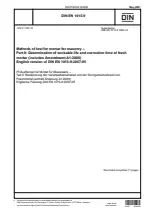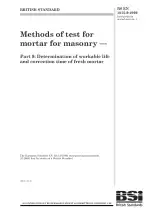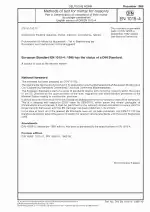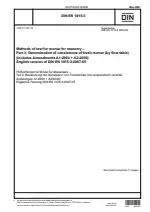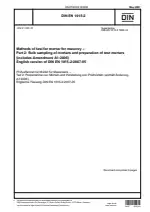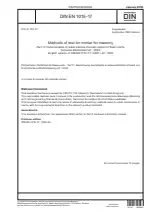Methods of Test for Mortar for Masonry - Part 9: Determination of Workable Life and Correction Time of Fresh Mortar
Also Known As:
The DIN EN 1015-9 standard is focused on determining the workable life and correction time of fresh mortar used in masonry applications. It provides three different methods for conducting these assessments. Method A is designed for general purpose mortar and is used to determine the workable life. On the other hand, methods B and C are specifically designed for thin layer mortar and are used to determine both the workable life and the correction time.
The standard aims to ensure that the mortar used in masonry construction possesses the necessary properties for effective application. It specifies the procedures and guidelines for carrying out the tests in a consistent and reliable manner. By determining the workable life and correction time, the standard helps builders and contractors plan their construction activities effectively and ensure the mortar remains in an optimal state for application.
The methods outlined in DIN EN 1015-9 are essential for evaluating the performance of fresh mortar under different conditions. They play a crucial role in quality control and provide valuable information for selecting the appropriate mortar type and optimizing construction processes. Compliance with this standard helps ensure the long-term durability and performance of masonry structures.
| Descriptors | Bearings, Consistency, Construction, Construction materials, Correction time, Determination, Fresh mortar, Fundamental quantity, Masonry, Mortars, Processing, Sampling methods, Stiffening times, Testing, Thin bed mortars, Workability time, Storage |
| ICS Codes | 91.100.10 - Cement. Gypsum. Lime. Mortar |
| Language(s) | English |
| File Size | 174.1 KB |

